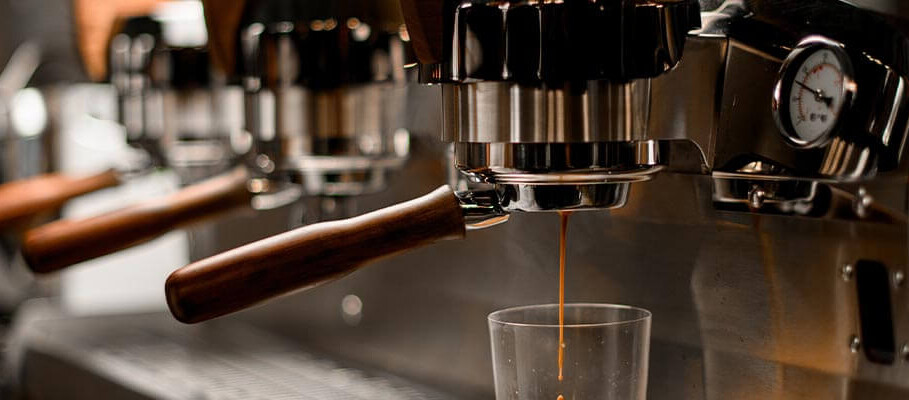Table of Content
- Coffee Origins: Understanding Terroir and Regional Profiles
- Coffee Processing Methods: Impact on Flavor and Quality
- Green Coffee Grading: What B2B Buyers Need to Know
- The Art of Roasting Coffee: Transforming Green Beans
- Ethical Sourcing: Sustainability and Traceability in Coffee
- The Rise of Specialty Coffee: A B2B Opportunity
- Brewing Techniques: Maximizing Flavor and Consistency
- Expanding Your Menu: Iced Coffee, Vegan Options, and Innovation
- Pro Tip: Innovate with Coffee
- Conclusion
1. Coffee Origins: Understanding Terroir and Regional Profiles
Like wine, the flavor of coffee is shaped by its terroir—the environmental factors that influence how it grows. Soil, climate, altitude, and surrounding vegetation all contribute to a coffee’s unique taste. These differences create distinct regional profiles that are important for coffee professionals to understand.
Latin America – Balanced, often nutty or chocolatey flavors.
- Brazil – Full-bodied, low acidity, a common base for espresso blends.
- Colombia – Medium body, bright acidity, caramel sweetness.
- Guatemala & Costa Rica – Ranges from citrusy and bright to rich and chocolatey.
Africa – Bright acidity and complex flavors.
- Ethiopia – Floral, tea-like, with jasmine and bergamot notes.
- Kenya – Bold berry flavors and full body.
- Rwanda & Burundi – Sweet, citrusy, and floral.
Asia – Earthy, full-bodied, and diverse.
- Indonesia – Deep, earthy, and sometimes spicy.
- Vietnam – Strong, bold Robusta, often used in espresso blends.
- India – A mix of Arabica and Robusta with nutty or spicy notes.
Choosing the right origin helps shape a coffee’s flavor, tell a compelling story, and meet customer preferences. Single-origin offerings can highlight these regional distinctions.
2. Coffee Processing Methods: Impact on Flavor and Quality
After harvesting, coffee cherries go through processing to remove their outer layers and reveal the green bean inside. This step is crucial, as it greatly affects the coffee’s final flavor and quality.
There are three main processing methods, each with its own impact on taste:
Washed (Wet) Process
The fruit is removed before drying. The cherries are pulped, fermented in water to break down any remaining fruit, and then thoroughly washed. This results in a clean, bright coffee with crisp acidity and a clear flavor profile, making it a popular choice for specialty coffee that highlights the bean’s natural characteristics.
Natural (Dry) Process
The cherries are dried whole, with the fruit still intact, often on raised beds or patios. This method produces a sweeter, fuller-bodied coffee with strong fruit notes like blueberry or tropical fruit. Since the beans stay in contact with the fruit longer, they absorb more sugars, creating a richer taste. However, this process requires careful monitoring to avoid defects.
Honey Process
A middle ground between washed and natural methods, honey processing leaves some of the sticky fruit (mucilage) on the bean during drying. This balances the sweetness and body of a natural process with the clarity and acidity of a washed coffee. The more mucilage left on the bean, the darker the "honey" process (white, yellow, red, or black), with darker varieties resulting in a sweeter, more intense flavor.
The choice of processing method depends on climate (drier regions favor natural processing), available resources, and desired flavor. For B2B buyers, understanding these methods is key to selecting coffee that meets their quality and taste preferences.

3. Green Coffee Grading: What B2B Buyers Need to Know
Green coffee beans are graded based on factors like size, density, defects, and moisture content—all of which affect roasting and final cup quality.
Specialty coffee is typically evaluated using strict standards, such as those from the Specialty Coffee Association (SCA), which assess defects in a standard sample (usually 300-350 grams).
Key Grading Factors:
- Screen Size – Measures bean size using screens with precise hole sizes. Larger beans (e.g., screen size 18) are sometimes linked to higher quality, but uniformity in size is more important for even roasting.
- Density – Denser beans often indicate higher quality, as they develop more slowly at higher altitudes, resulting in more complex flavors.
- Defects – Includes broken, insect-damaged, or sour beans, as well as foreign matter. The fewer defects, the higher the grade.
- Moisture Content – Ideally between 10-12%. Too much moisture can cause mold, while too little can make beans brittle and affect flavor.
For B2B buyers, understanding these grading systems is important to making informed purchasing decisions based on budget, quality standards, and intended use (e.g., espresso vs. filter coffee).
Sourcing high-quality green beans lays the foundation for a great final product. To ensure the best selection, requesting samples and cupping (tasting) the coffee before committing to a large purchase is highly recommended.
4. The Art of Roasting Coffee: Transforming Green Beans
Roasting is where coffee truly comes to life, transforming dense green beans into the aromatic, flavorful ones we know.
This process involves applying heat, which triggers chemical reactions that develop coffee’s distinct flavors and aromas. The roaster carefully controls temperature, time, and airflow to achieve the desired roast profile.
Roast Levels:
- Light Roasts – Preserve more of the bean’s origin characteristics and acidity, often with bright, floral, or fruity notes. Ideal for single-origin coffees that highlight terroir.
- Medium Roasts – Balance acidity, sweetness, and body, making them versatile for various brewing methods. Common flavor notes include caramel, nuts, and chocolate.
- Dark Roasts – Develop bold, intense flavors with smoky, chocolatey, or slightly bitter notes. The roasting process itself contributes more to the taste, making origin characteristics less distinct. Often used for espresso blends.
Roasting is both an art and a science, requiring skill, experience, and a deep understanding of coffee beans. For coffee shop owners, working with a skilled roaster ensures consistent quality and flavor. Some businesses choose to roast in-house for full control, but this requires a significant investment in equipment and expertise.
Are you looking for a supplier specialized in roasting coffee? Request a quote on our website to find the ideal supplier.

5. Ethical Sourcing: Sustainability and Traceability in Coffee
Ethical and sustainable sourcing is no longer just a niche concern—it’s a business necessity. Consumers today expect coffee to be produced in a way that respects both people and the planet, and awareness of social and environmental issues in the industry continues to grow.
Key Ethical Certifications & Practices:
- Fair Trade – Ensures farmers receive fair prices and safe working conditions while supporting community development.
- Rainforest Alliance – Focuses on environmental sustainability, promoting biodiversity, conserving resources, and improving farmer livelihoods.
- Organic – Guarantees coffee is grown without synthetic pesticides, herbicides, or fertilizers.
- Direct Trade – Involves buying directly from farmers, often leading to better prices for them, improved quality control, and greater traceability.
For B2B businesses, ethical sourcing strengthens brand reputation, attracts conscious consumers, and supports long-term sustainability in the coffee industry. It’s also becoming essential for meeting retailer and distributor requirements. Traceability—the ability to track coffee from farm to cup—is a crucial part of this, ensuring transparency and accountability.
For more information on sustainable coffee sourcing, visit the website of Fairtrade International.
6. The Rise of Specialty Coffee: A B2B Opportunity
Specialty coffee is the highest quality coffee, known for its exceptional flavor, careful processing, and often a traceable origin. The specialty coffee market is growing rapidly, driven by consumer demand for premium coffee experiences and a deeper appreciation for the unique flavors coffee can offer.
Specialty coffee is graded using the SCA (Specialty Coffee Association) scoring system, with coffees scoring 80 points or higher (out of 100) considered specialty grade. These coffees are often single-origin, showcasing the unique flavors of a specific farm or region.
For B2B businesses, embracing specialty coffee can offer a strong competitive edge.It lets you:
- Stand out: Offer unique, high-quality coffees that set you apart from competitors.
- Charge higher prices: Specialty coffee drinkers are willing to pay more for quality.
- Attract passionate customers: Appeal to coffee enthusiasts who value quality.
- Foster stronger supplier relationships: Specialty coffee often involves direct trade with farmers.
The specialty coffee trend also opens doors for innovation in brewing methods, flavor exploration, and coffee-based beverages.
Are you a professional for specialty coffee and looking for more exposure? Our team can help you to reach new customers. Request a consultation to learn more.

7. Brewing Techniques: Maximizing Flavor and Consistency
Even the best coffee beans can be ruined by improper brewing. Mastering the right brewing techniques is crucial for coffee shop owners, baristas, and any B2B business serving coffee.
Key factors that affect the final cup include:
- Water Quality: Always use filtered water. Minerals in tap water can interfere with taste and extraction.
- Grind Size: The grind size should match the brewing method. Coarse for French press, medium for drip, and fine for espresso. An inconsistent grind can lead to uneven extraction.
- Coffee-to-Water Ratio: Finding the right balance is key for the best extraction (often called the "golden ratio"). Too much coffee makes the brew bitter, while too little makes it weak and sour.
- Water Temperature: The ideal range is between 195-205°F (90-96°C). Water that's too hot can scorch the coffee, while water that's too cold leads to under-extraction.
- Brewing Time: The time the water spends with the coffee grounds needs to be controlled. Over-extraction makes the coffee bitter, while under-extraction results in a weak, sour taste.
Different brewing methods (like pour-over, French press, espresso, or drip) require specific techniques and equipment. Investing in training for your staff and using high-quality equipment (like grinders, brewers, scales, and timers) is essential to consistently delivering a great coffee experience.
8. Expanding Your Menu: Iced Coffee, Vegan Options, and Innovation
The coffee market is always changing, and B2B businesses need to stay ahead of shifting consumer preferences. Expanding your menu beyond traditional hot coffee can help attract new customers and boost sales.
- Iced Coffee: Cold brew, in particular, has become a major trend. It's made by steeping coarsely ground coffee in cold water for 12-24 hours, resulting in a smoother, less acidic concentrate. Cold brew can be served over ice, mixed with milk or cream, or used as a base for different iced coffee drinks. Its versatility and longer shelf life make it a great option for B2B businesses.
- Vegan Coffee Options: With the rise in veganism and plant-based diets, offering alternatives like soy, almond, oat, and coconut milk is important. Make sure to offer high-quality options and train baristas on how to properly steam and foam them for drinks like lattes and cappuccinos. Adding vegan-friendly pastries and snacks can also help attract this growing customer base.
- Coffee Cocktails and Innovations: Coffee is a perfect base for creating new, exciting experiences. Developing a menu with special, innovative beverages can set your business apart and keep customers coming back for something unique.
9. Pro Tip: Innovate with Coffee
Coffee is far from limited—it’s a world full of possibilities. It’s not just a drink; it’s a platform for creativity and innovation. Explore unique coffee-based drinks, flavor combinations, and alternative brewing methods to stand out from the competition. Think about offering coffee cocktails, signature desserts, or even coffee-infused dishes.
These options can help attract new customers and give you a unique edge. For example, you could create a rotating menu of limited-edition monthly beverages based on coffee to encourage repeat visits and keep customers engaged with what’s coming next.
10. Conclusion
The journey of coffee, from cultivation to the final cup, is complex and requires attention to key factors like origin, processing methods, grading, and roasting for B2B success.
Ethical sourcing with sustainability and traceability has become essential, driven by consumer demand for transparency. The specialty coffee movement offers opportunities to differentiate your brand, charge premium prices, and attract discerning customers. Meeting consumer preferences means mastering brewing techniques and offering a diverse menu, including iced coffee and vegan coffee options.
Beyond the basics, the neurochemistry of coffee consumption is an emerging field. While most enjoy coffee for its taste and energy-boosting effects, the science behind its impact is still being studied. How do compounds in coffee, beyond caffeine, affect our brains and bodies?
Exploring how genetics, metabolism, and the gut microbiome influence individual responses could transform product development and marketing. In the future, coffee blends could be tailored not just for flavor, but for specific cognitive or health benefits, resulting in a more personalized, scientific, and potentially therapeutic approach.
For more information about the food industry and current trends, refer to these insightful articles:
- Edible Food Packaging: A Sustainable Future?
- Fermented Foods: Benefits, Trends & Sustainability
- Advancing Market Potential with Plant-Based Food Innovations
- Foodceuticals: The Future of Food & Health
- Vegan Sweets: A Growing Market for Bakeries
- Gluten-Free Sweets: A Growing Market for B2B Bakeries
Find the ideal supplier for coffee beans on europages!
Il Cafetero: Provides impeccably sourced and traditionally Italian-roasted coffee, offering a unique sensory experience in every cup. They deliver the best of Italian coffee tradition with a hint of innovation, transforming each coffee break into a moment of genuine joy.
Seddio: Delivers excellence and innovation in coffee, providing proprietary, artisanally-roasted coffee beans, ground coffee, capsules, and related products like professional coffee machines and barista accessories. Since the 1960s, they have blended Italian expertise with quality raw materials to offer unique blends and comprehensive solutions specifically for bars, cafes, hotels and restaurants.
Caffè Giordano: Offers a wide range of superior, artisanally-produced coffee products, including pods, capsules, roasted beans, and ground coffee, alongside teas and infusions, rooted in Neapolitan tradition. Founded on family heritage and committed to quality, they combine rigorous product selection, artisanal care, and technological innovation to deliver the art and culture of Neapolitan coffee worldwide.
Jamaica Coffee Corporation: Specializes in sourcing and promoting the world's finest Arabica coffees, particularly Jamaican varieties, using a specialized roasting process to enhance their natural flavors. Their product line, "Purissimi Coffees", includes exclusive offerings like Jamaica Blue Mountain 100% and other single-origin, specialty-grade Arabica coffees.
Torrefazione Gourmet: Produces "Cup of Excellence" awarded coffees for bars and restaurants, ensuring exceptional quality and traceability from grower to roasting. Their coffees undergo rigorous selection and control processes, unmatched in the industry.
Torrefazione Paranà: Is a wholesale coffee roaster, serving the HORECA sector in Italy and Europe since 1960, specializing in coffee beans and pods. They maintain traditional, artisan roasting methods and recipes refined over three generations, focusing on quality, aroma, and authentic Italian taste, overseen by highly specialized personnel.
Caheze: A Belgian company, offers a range of high-quality, sustainably sourced Burundian coffees specifically for hospitality, catering, and roasting businesses. They focus on exceptional coffees (scoring 88+ points) while actively working to address challenges in processing, logistics, and trade policy to support the Burundian coffee community.

